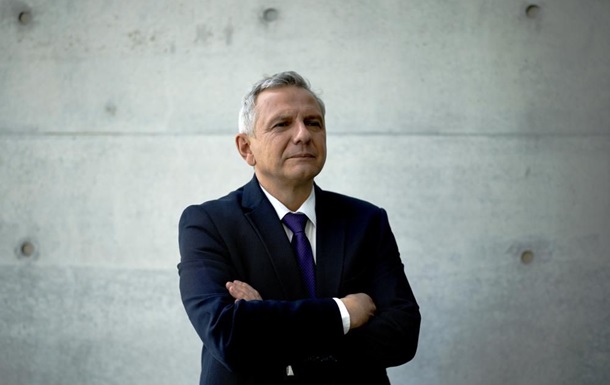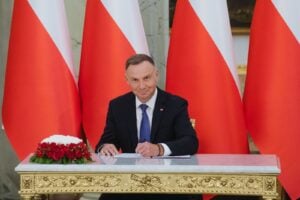It won’t be less than 44: Zelensky’s ex-advisor explains why the dollar has risen and what will happen next
11 June 2024 15:13 ЕКСКЛЮЗИВ
ЕКСКЛЮЗИВ
In recent days, foreign currency in Ukraine has started to rise in price again. At the beginning of the week, the NBU was giving UAH 40.24 for $1, and today its value jumped by 18 kopecks at once. [Kommersant] asked Oleg Ustenko, an economist and Advisor to the President of Ukraine from 28 May 2019 to 30 March 2024, what is happening to the cash exchange rate, why the hryvnia is losing ground, and what will happen next with the exchange rate.
Oleg Ustenko named several main reasons for the dollar’s appreciation.
“There are several important reasons. The first is that the NBU had to move to a lower exchange rate. Because despite the fact that there are quite a few gold and foreign exchange reserves at around USD 39 billion, we still need to spend as much as we have been spending since the beginning of this year. And this is USD 2 billion per month on average, starting from the beginning of this year until May inclusive. This is quite a lot of money. It was necessary to move to a more moderate exchange rate, and therefore, in my opinion, this was one of the most important reasons,”
– he said.
According to him, the second reason is that we are now in a trade deficit zone.
“Our imports are much higher than our exports, even though our exports have been growing for some time and are not bad in principle, if we compare them with, say, the previous year. Grain is being sold, and steel is also being sold. But still, the trade deficit is significant. And when you have a trade deficit, you have a current account deficit. It is also quite high, and accordingly, all the conditions arise to talk about additional devaluation pressure,”
– said the economist.
Another reason is that in order to have the situation that is happening now, we must also remember that we had a decline in the so-called remitens.
“This is what we receive here in Ukraine, from outside Ukraine, transfers that come from our labour migrants. By the way, they are still high. But they are on a downward trend, even though there are more people outside the country than in the pre-war years. Let me remind you that in the pre-war years, we received about USD 13-15 billion of these remittances. And if there is a decrease, there may be a depreciation of the exchange rate,”
– Ustenko explained.
The next reason is all about foreign investment, direct investment.
“They have been reduced to an absolute minimum. Never in our modern economic history has there been so little foreign direct investment. It is clear why this is happening – because there is a war. But when there is a decrease in foreign direct investment… it is simply not enough to cover the current account deficit. When they do not cover the current account deficit, it means that devaluation pressure also arises,”
– the economist added.
Ustenko named other reasons of a non-systemic nature, but they also exist.
“This is the fact that in recent weeks and months there has been an increase in demand for foreign currency from economic agents. Some companies could buy back foreign currency… Some economic agents bought back foreign currency and put additional pressure. But this is a temporary phenomenon, not a systemic one,”
– he explained.
Another reason for the dollar’s appreciation is that our budget, which is currently in effect for the current year, sets the average annual exchange rate at around UAH 42.5 to the dollar.
“In order to achieve this average annual rate, given the exchange rate of around 38.5 at the beginning of the year, we should have expected the devaluation processes we are seeing now. That is, if you have an exchange rate of 38 at the beginning of the year and the average annual exchange rate is set at 42, you have to have 44 at the end of the year to maintain this rate. If you don’t maintain this rate, then potentially your fees from customs can be reduced. And they are decreasing because they are pegged to the exchange rate,”
– ustenko said.
He stressed that on the one hand, the exchange rate is set, and on the other hand, there is the state budget deficit that is now emerging.
“The state budget deficit is growing compared to the parameters that were previously set. That is, if the state budget deficit was previously set at the same level – about USD 40 billion for this year, then at least USD 5 billion has been added,”
– the economist added.
According to his forecast, by the end of the year the exchange rate will be at least 44 UAH/USD.
“At the end of the year, we will not be at the levels we are at now. Firstly, as I said, the average annual exchange rate is set at 42.5, and if at the beginning of the year the rate was 38 and it was maintained at that level for almost six months, then, accordingly, to see the average annual exchange rate of 42.5, we should see at least UAH 44 at the end of the year,”
– Ustenko summarised.









